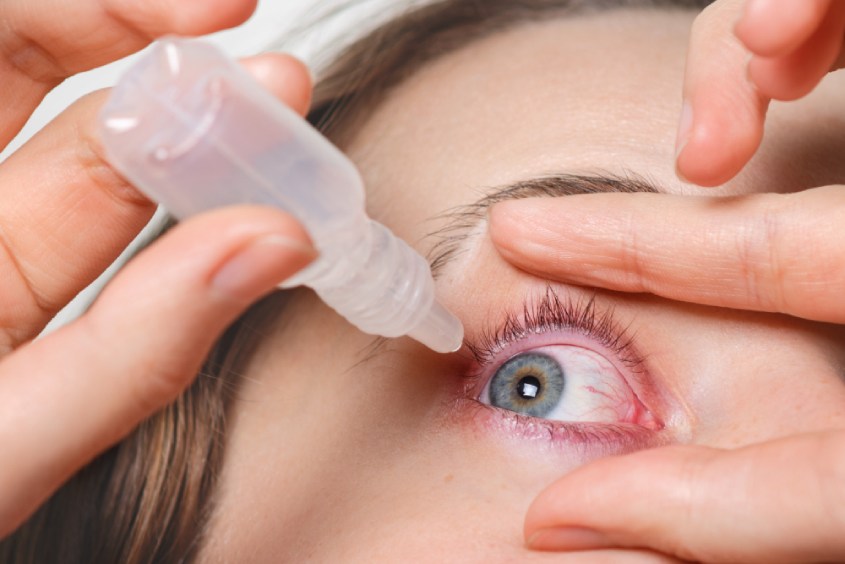Combatting Dry Eye: Effective Treatment Strategies

Dry eye syndrome is a prevalent eye condition affecting millions worldwide. It occurs when the eyes fail to produce enough tears or produce poor-quality tears, leading to inadequate lubrication and moisture on the eye surface. This can cause discomfort, including stinging, burning, redness, light sensitivity, blurred vision, and a sensation of something in the eye. Effectively managing dry eye is crucial for relieving discomfort and maintaining eye health and quality of life. In this guide, we’ll discuss different treatment approaches to address dry eye and improve comfort and vision clarity.
Understanding Dry Eye
Understanding the root causes and factors contributing to dry eye is essential for effective dry eye disease treatment. Dry eye can result from various factors, including environmental conditions like dry or windy weather, excessive screen use, aging, specific medications, hormonal shifts, autoimmune disorders, and structural issues with the eyelids or tear ducts. These factors can disrupt the normal balance of tear production, composition, and distribution, leading to dry eye symptoms.
Effective Treatment Strategies
- Lifestyle Modifications
Making lifestyle adjustments is essential for managing dry eye and enhancing overall eye health. Small changes in daily routines can significantly ease symptoms and lessen the frequency and intensity of dry eye episodes.
Staying hydrated is vital for balancing moisture levels in the body, including tear production. Advising patients to drink sufficient water throughout the day can prevent dehydration and promote stability in the tear film.
Blinking Exercises: Extended screen use and concentrated tasks often result in fewer blinking instances, increasing the risk of evaporative dry eye. Advising patients to take frequent breaks and engage in blinking exercises can evenly spread tears over the eye surface, averting dryness and discomfort.
Healthy Eating: Consuming a well-rounded diet containing vital nutrients like omega-3 fatty acids, vitamins A, C, and E, and zinc can promote eye health and tear production. Foods like fatty fish (e.g., salmon, mackerel), flaxseeds, chia seeds, walnuts, leafy greens, and citrus fruits are especially helpful in enhancing tear film stability and minimizing inflammation.
Using a humidifier can be beneficial, especially in dry indoor settings such as during winter or in air-conditioned spaces, which can worsen dry eye symptoms by causing tear evaporation. Adding a humidifier to your home or workplace can elevate ambient humidity levels, keeping the air adequately moist and lowering the likelihood of experiencing dry eye discomfort.
- Artificial Tears and Lubricating Eye Drops
Artificial tears and lubricating eye drops are frequently employed to offer instant relief from dry eye symptoms. They work by supplementing natural tear production and lubricating the eye surface. Available over the counter, these formulations come in different types, including preservative-free options suitable for those with sensitive eyes.
When suggesting artificial tears or lubricating eye drops, it’s vital to take into account the patient’s individual symptoms, preferences, and lifestyle. Certain formulations might be better suited for daytime application, whereas thicker gel-based drops could be more suitable for nighttime use or severe dry eye symptoms.
Patients should be taught the correct method for applying eye drops, which involves tilting the head back, pulling down the lower eyelid, and gently squeezing the bottle to release one drop into the conjunctival sac. It’s also important to instruct them to wait a few minutes between using different types of eye drops to ensure proper absorption and prevent dilution.
-
Prescription Medications
For moderate to severe dry eye conditions, prescription medications might be required to address inflammation, stimulate tear production, or enhance tear film stability. These medications are usually recommended by an eye care specialist after thoroughly assessing the patient’s symptoms, tear film composition, and underlying factors.
Besides anti-inflammatory medications, short-term use of steroid eye drops may be prescribed to relieve severe symptoms of ocular surface inflammation. These medications are usually reserved for acute flare-ups or worsening cases of dry eye and aren’t advised for prolonged use due to potential side effects like elevated intraocular pressure and cataract development.
-
Punctal Plugs
Punctal plugs, also referred to as lacrimal plugs or tear duct plugs, are tiny, biocompatible devices inserted into the puncta—small openings found in the inner corners of both upper and lower eyelids that drain tears away from the eye surface. By obstructing tear drainage, punctal plugs maintain natural tears and enhance their retention on the eye surface, delivering lasting relief from dry eye symptoms.
There are two primary kinds of punctal plugs: temporary and permanent. Temporary punctal plugs are usually crafted from dissolvable materials like collagen or hydrogel. They’re meant for short-term relief and to assess the patient’s reaction to punctal occlusion. In contrast, permanent punctal plugs, made of silicone or acrylic, are for extended use, particularly in individuals with chronic or severe dry eye.
The choice to suggest punctal plugs relies on several factors, including the intensity of dry eye symptoms, the root cause of tear dysfunction, and the patient’s preferences and treatment objectives. At times, punctal plugs may be combined with other dry eye treatments like artificial tears, prescription medications, and lifestyle adjustments to attain the best results.
Conclusion
Addressing dry eye necessitates a holistic strategy that tackles the root causes of tear dysfunction, lessens inflammation, and enhances tear film stability and retention. By integrating lifestyle changes, utilizing both over-the-counter and prescription treatments, and considering advanced therapeutic alternatives, individuals can effectively control dry eye and find relief from discomfort.
Patients must collaborate closely with their eye care providers to create customized treatment plans that suit their individual needs and symptoms. Regular follow-up appointments and continuous monitoring are crucial for assessing treatment effectiveness, modifying therapeutic approaches, and enhancing overall eye health and wellness.
Through proactive management and a tailored blend of treatment methods, people can reclaim comfort, clarity, and quality of life, alleviating the burden of dry eye symptoms. By remaining informed, proactive, and involved in their eye care, patients can manage their ocular health effectively and experience enduring relief from dry eye discomfort.